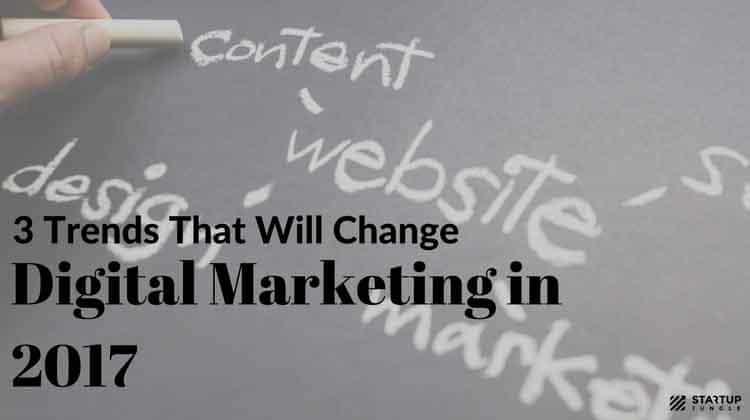Advertising has been around for hundreds of years. In fact, the first published ad showed up just on the heels of the first published newspaper, The Boston News-Letter, in 1704, and sought a buyer for a Long Island Estate on Oyster Bay.
But in today’s world, traditional marketing has taken a backseat to digital advertising. As technology improves and more people spend more time on the internet across more devices, it’s critical for a business to understand what works online and what doesn’t. After all, the goal of any successful marketing campaign is to meet potential clients where they live, and buyers today “live” online.
As such, here are 3 trends to get ahead of in 2017:
3 Digital Marketing Strategies That Will Trend In 2017

1. Go Native
Native advertising is everywhere. You’ve seen it. But if you haven’t seen it, that means it’s working!
Native advertising is an ad on the homepage of a website that looks like an actual part of the website. And that’s why they call them “native” – they actually look like part of the original site. But you’ll notice a “sponsored content” tag that gives it away as an ad.
Some users get annoyed by what they feel is “clickbait”, but those headlines bring in users who are interested in the headline and can get exposed to those brands. And more importantly, native advertising is a win-win for advertisers and users because it creates seamless advertising. There’s no interruption for the user to be shown the ad unless they’re genuinely interested in what the ad has to offer. Users don’t have to wait for the ad to finish playing before they can see the content they’re interested in. As for advertisers, they only pay when users click on their ad.
Native ads work really well, and since they’re so profitable for host sites, they’ll be quite prominent in 2017 and beyond.
2. Big Time
While getting paid for clicks is nice, the real money is in the data you collect. The more knowledge a marketer has about who is coming to a particular site, the more effective an ad campaign can be, which means more money coming in from sales and recurring ad spend.
By thoroughly understanding the demographic of a particular site, a smart marketer can stay well under budget while maximizing profits. For example, a BBQ shop wouldn’t show its ad to vegetarians, yet that may be exactly what’s happening if a marketer is bidding solely on price points without any research.
That’s where Big Data comes in.
Big Data is a term used to describe massive sets of data which can be analyzed to reveal patterns, trends, and associations – especially in regards to human behavior.
That’s how Facebook is able to earn so much in ad revenue. The social media giant has more big data than anyone else because of their ability to encourage users to share their likes and interests. Advertisers will use Big Data to run more effective ads aimed at more targeted groups. That’s why all the free apps and games people play specifically request access to their Facebook data. The companies collect and sell that data.
And as more and more people are willing to give out their information, it looks like Big Data is set to become a mainstay in 2017.
3. Video is King
More and more often, we’re seeing video ads in place of regular static ads.
Why is this, exactly?
Because they work.
Video ads are great at capturing our attention. As a result, the number of video ads are growing at 94% annually. Publishers love them because video ads break up the stillness of what’s in front of us. So whether it’s on a blog, Facebook, Instagram or YouTube, or any other social media platform, advertisers have options to run video ads.
And because of the efficiency of online advertising, advertisers can keep costs down by running the same ad across multiple platforms. This is also extremely helpful to brands because it keeps the message the same across social media, regardless of platform.
But perhaps the biggest appeal of video ads is that they fit seamlessly into mobile advertising. And since more people are online through mobile devices than desktops these days, it’s critical to engage them on mobile devices. In fact, mobile is so popular that mobile ad revenue now makes up more than 80% of Facebook’s total ad revenue. And the most effective way to engage with users on mobile devices is through video ads, so don’t expect them to disappear anytime soon.
While these trends aren’t going anywhere in 2017, don’t wait to take advantage of them, as new trends are emerging regularly. Keep an eye on the newest strategies popping up. After all, you never know which tool may be the one to elevate your business to the next level.
Enjoyed this article? Do you want to add anything to this list? Let us know your thoughts below and make sure to sign up for the 21 point business startup checklist.




